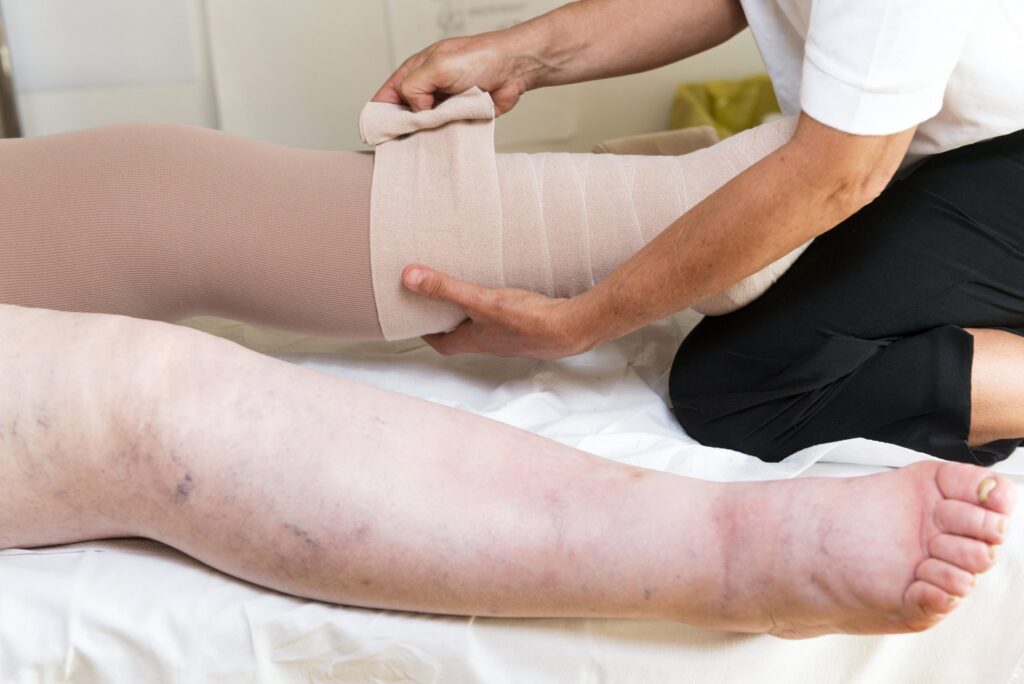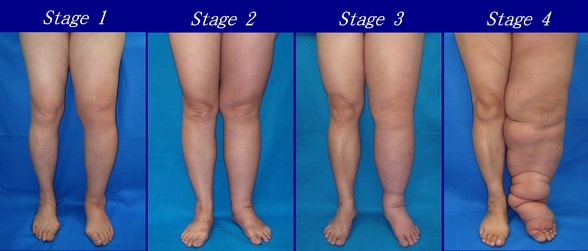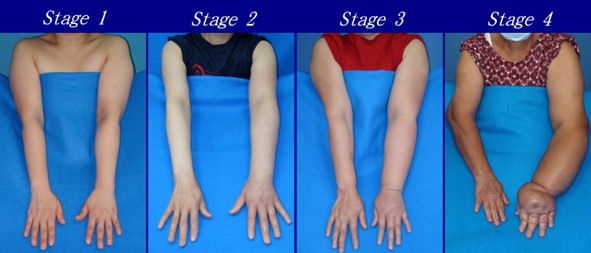Swelling Got You Down?

If you’ve ever noticed your hand is swollen, or your ankle looks bigger than usual, your first thought tends to be “How did I hurt myself?” When people hear “lymphedema”, most minds think breast cancer. Many don’t realize lymphedema is more common with various underlying health conditions including obesity, venous insufficiency, and diabetes. How would one know whether the swelling is a result from an injury or from lymphedema? We’re going to dive into the lymphatic system, what signs to look for, and how it differs from general edema.
What is the lymphatic system?
The lymphatic system plays an important role in your body’s circulation and immune function. Within your body, lymph vessels travel side by side with arteries and veins. The lymph system works to collect, filter, and return what fluid and nutrients your body can use. The rest of the waste is taken to the thoracic duct where your body disposes of it through urination. Lymph fluid consists of dead cells, unwanted proteins, fats, and other unnecessary cells that the body can no longer use.
What is lymphedema?
Lymphedema is a progressive disease, but when properly treated is able to be managed. Somewhere within the lymph system, a disruption causes an accumulation of lymph fluid. This accumulation can occur in any area of the body. Progression can vary from one week to a few years. Lymphedema is categorized in 4 stages depending on the specific symptoms.


What causes lymphedema?
Any type of injury, trauma, or dysfunction of the lymphatic system can result in increased swelling. In the US, the most common cause is surgery or radiation following cancer. Obesity and long standing venous problems can also result in lymphedema. Although not as common, lymphedema can be hereditary, as the dysfunction of the system is already there, but swelling does not always manifest.
What are the symptoms of lymphedema?
The #1 symptom is swelling in the arms or legs. While the trunk and genitals can be involved, these areas are not as common. Some may ask, “how do I know if I have just general swelling or lymphedema?” There are a few key symptoms occur in lymphedema but not common with general swelling.
| Lymphedema | Edema |
| Progressive swelling overtime Infections and redness Firm/dense swelling Skin dryness or hardening Body parts will feel heavy and uncomfortable | Swelling occurring after an injury Improve with time and recovery |
When comparing lymphedema to general edema, the biggest factor is the protein in lymphatic fluid. Higher density of protein causes the fluid to be more dense, which in turn makes the swollen area firmer than general edema. Infection is also a high risk for lymphedmea. If a local infection is not treated in a timely manner, it can spread and protein can fuel the infection.
How can lymphedema be treated?
Many don’t realize lymphedema can be treated and managed with Complete Decongestive Therapy performed by a Certified Lymph Therapist. Treatment consists of skin care, manual lymph drainage, exercise and compression. Patient’s are heavily educated on the lymphatics, signs to be aware of, and how best to manage their symptoms. Every treatment plan is designed for the individual person, as every lymph system and associated symptoms are unique.
Next time you notice you, your friend, or family member have swelling that hasn’t improved, educate them on lymphedema. Talk to a doctor and decide what treatment can be done for you!
Bond, M., MS, PT, CLT, CIDN. (n.d.). Lymphedema I: Comprehensive Lymphedema and Venous Edema and Management. Lecture.
Chikly, B. (2004). Silent waves: Theory and practice of lymph drainage therapy: An osteopathic lymphatic technique. Scottsdale, AZ: I.H.H. Pub.
Lymphedema
https://en.wikipedia.org/wiki/Lymphedema
